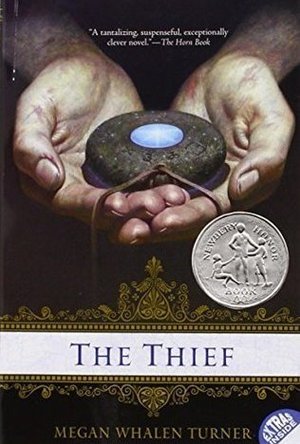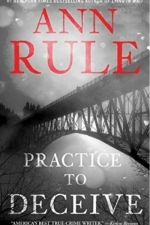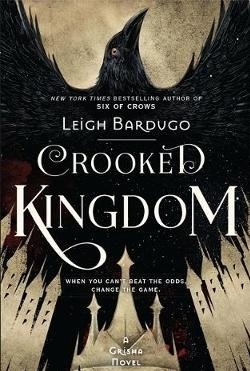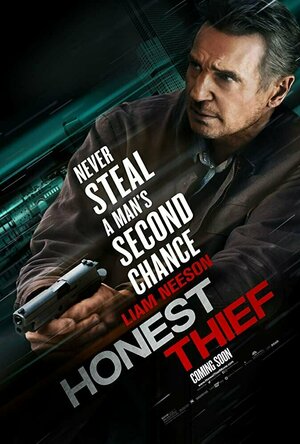Search

The Thief (The Queen's Thief #1)
Book
Discover the world of the Queen's Thief New York Times-bestselling author Megan Whalen Turner's...

Practice to Deceive
Book
#1 New York Times bestselling author and Queen of True Crime Ann Rule delivers another gripping...
True crime murder
5 Minute Movie Guy (379 KP) rated Focus (2015) in Movies
Jul 1, 2019
The problem with Focus is that it treats its audience like we're all as dumb as nails. While the film itself is entertaining, its cons are unconvincing, and it's not nearly as smart as it thinks it is.
After watching Focus, I thought back to a great line from Will Smith’s con artist character Nicky Spurgeon, in which he proclaims, “There’s two kinds of people in this world. There’s hammers and nails. You decide which one you want to be.” It’s a powerful and chilling line of dialogue that emphasizes Nicky’s need to exert power and control over others in order to be successful in his indecent business. The problem with the film, however, is that it treats its audience like we’re all as dumb as nails.
Unfortunately, therein lies the film’s biggest problem. While I do think there is some merit in its depiction of the con game, Focus for the most part is unconvincing. Not only did I feel like I was being conned by the characters, but I felt like I was being conned by the legitimacy of the cons themselves. Most of them are quite a stretch, to say the least, but more troublesome is that their successful outcomes don’t ever feel truly earned. Everything just cleans up too neatly, due to some inane level of planning that relies on far too many improbable factors and additionally treats every mistake as if it was part of the plan all along. Therefore, trying to take Focus seriously is something of a brain-numbing exercise. While the film itself is fairly entertaining, it’s not nearly as smart as it thinks it is.
As a viewer, it feels like there’s not much of a pay-off in watching them pull off their successful schemes, and that’s largely because we’re left out of the loop. We the audience are being played the whole time. We’re not given any room for our own participation and guesswork because the movie gives us no clues to help us solve the puzzle. Yet it’s inviting us to look for answers by emphasizing the importance of being focused and aware, while withholding any and all necessary clues to help us make sense of what is happening along the way.
In Focus, Will Smith plays con-man Nicky, who meets a beautiful woman named Jess (Margot Robbie) while dining alone one night. After inviting Nicky to her hotel room, Jess attempts to con him with the help of a friend, but ultimately fails. After all, you can’t hustle a hustler. Being eager to learn more, Jess wants Nicky to take her under his wing and teach her the art of his craft. What ensues is a steamy relationship and a partnership in deception.
Jess proves to be a natural in the con game, quickly earning the respect and admiration of Nicky, who allows her to join his thirty-strong crew. This team of crooks racks up millions through swindling, hustling, and pickpocketing. It’s fun to watch the action unfold, but a little disconcerting that it glorifies these criminals while they’re plainly stealing from innocent strangers. Make no mistake about it, Focus portrays them as the good guys, and offers little to no consequence for their devious actions. Still, it’s hard to root against this cast of con-artists, and you’ll want to see how they manage to get away with it all.
Instead, Focus tries to make you believe there isn’t any con in play at all, only to later pull out the rug to reveal a highly ludicrous scenario. It feels dishonest and cheap, like it’s essentially cheating its way to the desired outcome without doing the work to get there. It’s selling its own capers short and taking the fun out of them. Thus even the climax of the film feels disjointed because we can’t believe what we’re seeing and just have to watch incredulously as we wait for the inevitable far-fetched explanation.
Despite the shortcomings of the cons, I would like to express that the film still does plenty of things right. First and foremost, Will Smith shines in his performance, adding enough perplexity to his character to keep you on your toes. He makes it hard to tell whether or not his character Nicky is bluffing, which helps add to the tension of scenes. Even when Nicky appears to break character and let his guard down, I still found myself guessing about his true intentions. While the movie is overall somewhat of a letdown, I can safely say that Will Smith absolutely nails it.
The only issue I had with Will Smith is his character’s obsession with Margot Robbie’s Jess. I’m sure many guys could attest to a Margot Robbie obsession, but I’m not one of those guys. While the chemistry between Smith and Robbie was fairly good, it did seem more than a tad blown out of proportion. The romance between them felt rushed and more lustful than loving. Still, Robbie gives a respectable performance of deception and allure.
I would like to particularly applaud the work of B.D. Wong, who plays a high-stakes roller that gambles with Nicky during the Super Bowl, in what is my personal favorite scene of the movie. The tension between Wong and Smith is absolutely electrifying, and they play off of each other extraordinarily well. I was on the edge of my seat throughout their whole encounter, only to have the moment spoiled by an absurd and unlikely final outcome.
The other performances are all adequate, though most of the characters are given little screen time, aside from Nicky’s perverted, overweight associate Farhad (Adrian Martinez) who musters up a few laughs. The dialogue can be pretty hit-or-miss, and the plot is rather thin, but the production values are outstanding. This is a film that is unmistakably beautiful to look at, with gorgeous sets and superb camera work. One particularly admirable scene has the camera placed in the passenger seat focused on a man who is gearing himself up before he deliberately crashes his car head-on into another. It’s a moment that feels like a strange detour, and yet it’s so bizarre and memorable that it just works.
Focus has the makings of an excellent film, but it regrettably drops the ball by fumbling the con game. If only the cons themselves weren’t so far-fetched and sloppy, the whole movie would have been a whole lot more effective. Despite the film’s insistence that you look closely, its most pivotal moments don’t hold up to any sort of analysis or scrutiny. In other words, this is a film that would be best enjoyed out of focus.
(This review was originally posted at 5mmg.com on 1.31.16.)
Unfortunately, therein lies the film’s biggest problem. While I do think there is some merit in its depiction of the con game, Focus for the most part is unconvincing. Not only did I feel like I was being conned by the characters, but I felt like I was being conned by the legitimacy of the cons themselves. Most of them are quite a stretch, to say the least, but more troublesome is that their successful outcomes don’t ever feel truly earned. Everything just cleans up too neatly, due to some inane level of planning that relies on far too many improbable factors and additionally treats every mistake as if it was part of the plan all along. Therefore, trying to take Focus seriously is something of a brain-numbing exercise. While the film itself is fairly entertaining, it’s not nearly as smart as it thinks it is.
As a viewer, it feels like there’s not much of a pay-off in watching them pull off their successful schemes, and that’s largely because we’re left out of the loop. We the audience are being played the whole time. We’re not given any room for our own participation and guesswork because the movie gives us no clues to help us solve the puzzle. Yet it’s inviting us to look for answers by emphasizing the importance of being focused and aware, while withholding any and all necessary clues to help us make sense of what is happening along the way.
In Focus, Will Smith plays con-man Nicky, who meets a beautiful woman named Jess (Margot Robbie) while dining alone one night. After inviting Nicky to her hotel room, Jess attempts to con him with the help of a friend, but ultimately fails. After all, you can’t hustle a hustler. Being eager to learn more, Jess wants Nicky to take her under his wing and teach her the art of his craft. What ensues is a steamy relationship and a partnership in deception.
Jess proves to be a natural in the con game, quickly earning the respect and admiration of Nicky, who allows her to join his thirty-strong crew. This team of crooks racks up millions through swindling, hustling, and pickpocketing. It’s fun to watch the action unfold, but a little disconcerting that it glorifies these criminals while they’re plainly stealing from innocent strangers. Make no mistake about it, Focus portrays them as the good guys, and offers little to no consequence for their devious actions. Still, it’s hard to root against this cast of con-artists, and you’ll want to see how they manage to get away with it all.
Instead, Focus tries to make you believe there isn’t any con in play at all, only to later pull out the rug to reveal a highly ludicrous scenario. It feels dishonest and cheap, like it’s essentially cheating its way to the desired outcome without doing the work to get there. It’s selling its own capers short and taking the fun out of them. Thus even the climax of the film feels disjointed because we can’t believe what we’re seeing and just have to watch incredulously as we wait for the inevitable far-fetched explanation.
Despite the shortcomings of the cons, I would like to express that the film still does plenty of things right. First and foremost, Will Smith shines in his performance, adding enough perplexity to his character to keep you on your toes. He makes it hard to tell whether or not his character Nicky is bluffing, which helps add to the tension of scenes. Even when Nicky appears to break character and let his guard down, I still found myself guessing about his true intentions. While the movie is overall somewhat of a letdown, I can safely say that Will Smith absolutely nails it.
The only issue I had with Will Smith is his character’s obsession with Margot Robbie’s Jess. I’m sure many guys could attest to a Margot Robbie obsession, but I’m not one of those guys. While the chemistry between Smith and Robbie was fairly good, it did seem more than a tad blown out of proportion. The romance between them felt rushed and more lustful than loving. Still, Robbie gives a respectable performance of deception and allure.
I would like to particularly applaud the work of B.D. Wong, who plays a high-stakes roller that gambles with Nicky during the Super Bowl, in what is my personal favorite scene of the movie. The tension between Wong and Smith is absolutely electrifying, and they play off of each other extraordinarily well. I was on the edge of my seat throughout their whole encounter, only to have the moment spoiled by an absurd and unlikely final outcome.
The other performances are all adequate, though most of the characters are given little screen time, aside from Nicky’s perverted, overweight associate Farhad (Adrian Martinez) who musters up a few laughs. The dialogue can be pretty hit-or-miss, and the plot is rather thin, but the production values are outstanding. This is a film that is unmistakably beautiful to look at, with gorgeous sets and superb camera work. One particularly admirable scene has the camera placed in the passenger seat focused on a man who is gearing himself up before he deliberately crashes his car head-on into another. It’s a moment that feels like a strange detour, and yet it’s so bizarre and memorable that it just works.
Focus has the makings of an excellent film, but it regrettably drops the ball by fumbling the con game. If only the cons themselves weren’t so far-fetched and sloppy, the whole movie would have been a whole lot more effective. Despite the film’s insistence that you look closely, its most pivotal moments don’t hold up to any sort of analysis or scrutiny. In other words, this is a film that would be best enjoyed out of focus.
(This review was originally posted at 5mmg.com on 1.31.16.)
postapocalypticplayground (27 KP) rated Crooked Kingdom in Books
Jan 9, 2018
Brekker is back and with more fiendish frivolity from the barrel. Still trying to recover from the disastrous end to the Ice Court job, little does Kaz know how deep the deception went and how much he is going to have to unravel to even begin to salvage what he started. Kaz maybe clever but he is far from the only clever man in Ketterdam. He is going to have to work even harder than ever before to try and recapture what he is owed, but with Inej captured, Nina battling an addiction with parem, Wylan tailored to the wrong face and Jesper now forced to confront his past, how easy will that be?
Crooked Kingdom is a longer book than Six of Crows yet the action takes place mainly over a matter of days, the multiple POV's stretching the tortuously epic and heart thumping twists across the pages. It still has that immense page turning captivation that was within Six of Crows, but it just lacked that extra sense of excitement along with it. They are both books of equal joy but I think book 1 just pips it, but only just. In typical Kaz Brekker style there are twists and swindles and multiple cons that would given Danny Ocean on his best day a run for his money. I love a story that keeps me questioning myself and hanging on a thread as to the outcome, and Crooked Kingdom gave this to me in spades.
I don't know what is wrong with me of late in the emotions stake, but this book again reduced me to tears, the short but intense bursts of connectivity with the characters overwhelmed me. Multiple POV's in books is a risk and I have been drowned by them in books in the past but Leigh Bardugo manages to completely avoid this. Despite every player being forced to battle for chapter time, I felt utterly part of them and their story, sharing their joys and sadness as they peaked and troughed through the words.
The only thing that I didn't enjoy about this concluding part of the duology was entirely down to the publisher. I read the paperback of this book and found that the text was just so hard to read. The margins were so tight, the text was disappearing into the gutter and hiding under my thumbs as I was reading. I hate having to bend back spines on paperbacks which made this even more of an arduous task, I get that more text on a page means fewer pages and lower print costs but this made it such a hard read at times, sort it out Indigo!! This is the first Duology that I have read and I have to say this is now my favourite book series style, all of the action and none of the filler - I hope that more writers/publishers take this forward in the future.
Would I love more from Kaz and the Dregs? Of course! However, unlike a TV show that jumps the shark I am glad that the world of Ketterdam has been left the way it has and I look forward immensely to the next original world created by Bardugo.
Crooked Kingdom is a longer book than Six of Crows yet the action takes place mainly over a matter of days, the multiple POV's stretching the tortuously epic and heart thumping twists across the pages. It still has that immense page turning captivation that was within Six of Crows, but it just lacked that extra sense of excitement along with it. They are both books of equal joy but I think book 1 just pips it, but only just. In typical Kaz Brekker style there are twists and swindles and multiple cons that would given Danny Ocean on his best day a run for his money. I love a story that keeps me questioning myself and hanging on a thread as to the outcome, and Crooked Kingdom gave this to me in spades.
I don't know what is wrong with me of late in the emotions stake, but this book again reduced me to tears, the short but intense bursts of connectivity with the characters overwhelmed me. Multiple POV's in books is a risk and I have been drowned by them in books in the past but Leigh Bardugo manages to completely avoid this. Despite every player being forced to battle for chapter time, I felt utterly part of them and their story, sharing their joys and sadness as they peaked and troughed through the words.
The only thing that I didn't enjoy about this concluding part of the duology was entirely down to the publisher. I read the paperback of this book and found that the text was just so hard to read. The margins were so tight, the text was disappearing into the gutter and hiding under my thumbs as I was reading. I hate having to bend back spines on paperbacks which made this even more of an arduous task, I get that more text on a page means fewer pages and lower print costs but this made it such a hard read at times, sort it out Indigo!! This is the first Duology that I have read and I have to say this is now my favourite book series style, all of the action and none of the filler - I hope that more writers/publishers take this forward in the future.
Would I love more from Kaz and the Dregs? Of course! However, unlike a TV show that jumps the shark I am glad that the world of Ketterdam has been left the way it has and I look forward immensely to the next original world created by Bardugo.
Kyera (8 KP) rated The Progeny (Descendants of the House of Bathory #1) in Books
Feb 1, 2018
What do you do when an ancestor's actions threaten your very existence? You disappear. Emily, or at least that's what her name is now, must begin a quiet, hidden, new life in Maine. It's one of those small towns with a couple of hundred residents, some shops/eating establishments, an unexplained interest to tourists and not much else. The sign must say Greenville, population: a handful of moose.
The beginning just reminds me of home, with the gorgeous trees, lake, the phrase "wicked cool" and Emily's Red Sox cap. The action quickly takes over the plot, as Emily must flee Maine with a man she doesn't know if she can trust.... from a guy who had been following her for years with one goal - to kill her. With her memories gone Emily, or Audra as she finds out, doesn't know who she can trust. Is Luka the one who wants her dead? Or did Rolan lie and he's the real threat?
The unique plot is intriguing and the mystery won't let you put the book down. Danger lurks around every corner and Audra must rediscover what she forced herself to forget, at all costs.
The characters are intriguing and develop over the course of the novel. The Progeny are secretive and with good reason, any knowledge they have of their brethren can be taken upon their deaths. Their minds put countless others at risk unless they keep themselves isolated. While her comrades are decently well described, they don't quite feel like fully realized people. We need to now more of their dreams and fears, history, relationships and motivation.
The "big-bads" are sort of a generic evil villain type that I wished was developed more. What turned him into a zealot? What <i>is</i> his history with Audra's mother? How did he rise in the Court? I know Audra lost her memories, so we're in the dark like her but it just makes the novel feel less realized than it could.
The one relationship that feels authentic is between Audra and Luka. Even though she's not initially sure she can trust him and questions herlself throughout the novel - she still can't imagine going through everything without him/ I'm glad to learn that it isn't one long-running deception. The end of the novel is still completely unexpected in regards to the two of them.
Claudia and Piotrek are so close but he feels like such a mystery. We get to experience some of Claudia's emotions, like her confusion and hurt at being left or her anger about Ivan's death. Piotrek just seems flat in comparison. He's very protective of Claudia and painted a picture once. For all we know, he could have been an artist and it was just one of his many works. Its just as likely that it was the one and only time he attempted to be creative. I wish Piotrek was more develop as I"m very interested to learn more about him.
Audra travels to a number of foreign locations and they are described well enough that you can imagine them beautifully. They may not be the most glamorous villas or rich cities but you want to learn more about them nonetheless.
The book ends with a lot of revelations and so many more questions. Traitors are unmasked. Confessed or accused killers may not have been the murderers after all. Lovers are in peril. And time is running out. I know I can't wait to read the next book and find out what happens.
The beginning just reminds me of home, with the gorgeous trees, lake, the phrase "wicked cool" and Emily's Red Sox cap. The action quickly takes over the plot, as Emily must flee Maine with a man she doesn't know if she can trust.... from a guy who had been following her for years with one goal - to kill her. With her memories gone Emily, or Audra as she finds out, doesn't know who she can trust. Is Luka the one who wants her dead? Or did Rolan lie and he's the real threat?
The unique plot is intriguing and the mystery won't let you put the book down. Danger lurks around every corner and Audra must rediscover what she forced herself to forget, at all costs.
The characters are intriguing and develop over the course of the novel. The Progeny are secretive and with good reason, any knowledge they have of their brethren can be taken upon their deaths. Their minds put countless others at risk unless they keep themselves isolated. While her comrades are decently well described, they don't quite feel like fully realized people. We need to now more of their dreams and fears, history, relationships and motivation.
The "big-bads" are sort of a generic evil villain type that I wished was developed more. What turned him into a zealot? What <i>is</i> his history with Audra's mother? How did he rise in the Court? I know Audra lost her memories, so we're in the dark like her but it just makes the novel feel less realized than it could.
The one relationship that feels authentic is between Audra and Luka. Even though she's not initially sure she can trust him and questions herlself throughout the novel - she still can't imagine going through everything without him/ I'm glad to learn that it isn't one long-running deception. The end of the novel is still completely unexpected in regards to the two of them.
Claudia and Piotrek are so close but he feels like such a mystery. We get to experience some of Claudia's emotions, like her confusion and hurt at being left or her anger about Ivan's death. Piotrek just seems flat in comparison. He's very protective of Claudia and painted a picture once. For all we know, he could have been an artist and it was just one of his many works. Its just as likely that it was the one and only time he attempted to be creative. I wish Piotrek was more develop as I"m very interested to learn more about him.
Audra travels to a number of foreign locations and they are described well enough that you can imagine them beautifully. They may not be the most glamorous villas or rich cities but you want to learn more about them nonetheless.
The book ends with a lot of revelations and so many more questions. Traitors are unmasked. Confessed or accused killers may not have been the murderers after all. Lovers are in peril. And time is running out. I know I can't wait to read the next book and find out what happens.
Sophia (Bookwyrming Thoughts) (530 KP) rated Marie Antoinette, Serial Killer in Books
Jan 23, 2020
I only picked up <i>Marie Antoinette, Serial Killer</i> for two reasons: 1) Marie Antoinette is a serial killer. I <i>had</i> to see it. 2) I'm in need of a book that's less of a romance. Oh, and I need a break from all of the books out there that do before I blow a gasket. Really, it's for everyone's benefit.
This book is a fantastic break for me – it's <b>not a fluffy book set in Paris with a Paris romance</b> (though there <i>is</i> a sort-of Paris romance I'm totally peachy with), despite the fact Alender starts things off with a gruesome murder involving a head being chopped off by a ghost.
No, I did not actually enjoy reading a person getting her head chopped off by a flying broken mirror shard caused by a ghost. I might be a ninja and secretly evil, but I don't actually enjoy those kinds of things.
France's history in the late 18th century is quite intriguing – from helping the US with the American Revolution against the British and then entering their own Revolution against the monarchy a little over a decade later. Alender's book is <b>full of rich details involving French history and culture circulating the Revolution</b> (despite the fact some facts were liberated by Alender to fit the overall plot of the story) as Colette tours France with her classmates, questions her roots and her friendship with Hannah, and tries to figure out why she's seeing a Marie Antoinette lookalike everywhere.
<b>The amount of French the author uses throughout the book isn't overwhelming</b> – it's enough to keep the intrigue, but not enough where it'll be overly confusing and categorizing the book as a piece of French literature. Then again, it's probably helpful when 1) the main character isn't entirely proficient at French, and 2) the romance languages are so similar, I pretty much understand the basis of the conversations with my sliver understanding of Spanish and Italian.
On the overall basis of the book being well written, I had mixed feelings for Colette for awhile – she's both likable and not likable at the same time. She's not likable because <b>she just seems to have a very snobby attitude of sorts, tries too hard to fit in with the rich and wealthy at her private school, and spends her time being a doormat in the beginning of the book for fear of facing Hannah's wrath</b>. As the book goes on and everyone makes Colette questions her friendship with Hannah, Colette slowly becomes likable – someone who isn't snobby after all, and her ending with Hannah is quite fantastic. Of course, it does become a little obvious there's some sort of gap between their friendship (and growing) since Colette secretly rebels at times without Hannah's knowledge.
All in all, <i>Marie Antoinette, Serial Killer</i> is <b>a book about deception, loyalty, and how even the dead can come back for revenge to complete unfinished business before they can finally rest in peace.</b>
<a href="https://bookwyrmingthoughts.com/review-marie-antoinette-serial-killer-by-katie-alender/"; target="_blank">This review was originally posted on Bookwyrming Thoughts</a>
This book is a fantastic break for me – it's <b>not a fluffy book set in Paris with a Paris romance</b> (though there <i>is</i> a sort-of Paris romance I'm totally peachy with), despite the fact Alender starts things off with a gruesome murder involving a head being chopped off by a ghost.
No, I did not actually enjoy reading a person getting her head chopped off by a flying broken mirror shard caused by a ghost. I might be a ninja and secretly evil, but I don't actually enjoy those kinds of things.
France's history in the late 18th century is quite intriguing – from helping the US with the American Revolution against the British and then entering their own Revolution against the monarchy a little over a decade later. Alender's book is <b>full of rich details involving French history and culture circulating the Revolution</b> (despite the fact some facts were liberated by Alender to fit the overall plot of the story) as Colette tours France with her classmates, questions her roots and her friendship with Hannah, and tries to figure out why she's seeing a Marie Antoinette lookalike everywhere.
<b>The amount of French the author uses throughout the book isn't overwhelming</b> – it's enough to keep the intrigue, but not enough where it'll be overly confusing and categorizing the book as a piece of French literature. Then again, it's probably helpful when 1) the main character isn't entirely proficient at French, and 2) the romance languages are so similar, I pretty much understand the basis of the conversations with my sliver understanding of Spanish and Italian.
On the overall basis of the book being well written, I had mixed feelings for Colette for awhile – she's both likable and not likable at the same time. She's not likable because <b>she just seems to have a very snobby attitude of sorts, tries too hard to fit in with the rich and wealthy at her private school, and spends her time being a doormat in the beginning of the book for fear of facing Hannah's wrath</b>. As the book goes on and everyone makes Colette questions her friendship with Hannah, Colette slowly becomes likable – someone who isn't snobby after all, and her ending with Hannah is quite fantastic. Of course, it does become a little obvious there's some sort of gap between their friendship (and growing) since Colette secretly rebels at times without Hannah's knowledge.
All in all, <i>Marie Antoinette, Serial Killer</i> is <b>a book about deception, loyalty, and how even the dead can come back for revenge to complete unfinished business before they can finally rest in peace.</b>
<a href="https://bookwyrmingthoughts.com/review-marie-antoinette-serial-killer-by-katie-alender/"; target="_blank">This review was originally posted on Bookwyrming Thoughts</a>
Gareth von Kallenbach (980 KP) rated Divergent (2014) in Movies
Aug 6, 2019
One Choice, decided your friends. One Choice, defines your beliefs. One Choice, determines your loyalties – Forever. ONCE CHOICE CAN TRANSFORM YOU”
Beatrice Prior lives in a futuristic version of Chicago wherein it is divided into five different distinct factions. Each faction is dedicated to following one single virtue. The first faction is Abnegation, known as the “stiffs” of the community. It was formed by those who blame selfishness for human nature’s errors; thereby eliminating anything that can be seen as being selfish. Dauntless was formed by those who blamed cowardice for society’s problems; thereby finding bravery by facing ones fears. Erudite- the “brains” of the operation. Run by those who blamed human ignorance for the faults of society. They formed Erudite as a way of eliminating ignorance and darkness from human minds. Amity- the “flower children” who dislike war, was formed in order to keep a peaceful society that would be free from conflict and sadness caused by wars and instigation. Candor- a faction formed by those who blame duplicity and deception, who believe that dishonesty is the key fault in human nature which began evil and war. There are also those who do not fit into any of the factions. Those people are called The Factionless and are people who are poor and live on the streets. There are few who possess the traits of all five factions. They are called The Divergent. Being a Divergent is considered extremely dangerous because their minds can not be controlled.
The only way to find out which faction one belongs to is by taking an aptitude test. It’s not until the ceremony that a person chooses to join a faction according to the test results. Beatrice doesn’t have the luxury of knowing which faction she belongs to because her test results came back as inconclusive meaning she is in fact a Divergent. She chooses to leave her mother and father behind in Abnegation and decides to join Dauntless while her brother is placed into Erudite. The family is torn apart without knowing her secret of being a Divergent. After she arrives into Dauntless she is forced to be brave by overcoming obstacles, finding love and making friends while finding herself in a war that tries to overthrow the government.
I was pleasantly surprised with how much action this film has. Without reading the books prior to screening the film, it is hard to say if the film follows closely to the book Honestly I did not have high hopes for the film and I’m not sure why other than its story being somewhat similar to The Hunger Games in all of its dystopian glory. I am glad to report that though the two stories are alike they are unique in their own way. One is not better than the other, they are just different and should not be misconstrued as being the same type of story. The acting is exceptional! The actors are perfect at portraying their characters. After being sucked in from beginning to end it not only left me wanting more but it left me wanting to know the characters more. I am left with wanting to read the series of books that much more!
“I feel like someone breathed new air into my lungs. I am not Abnegation. I am not Dauntless.
I am Divergent.”
Beatrice Prior lives in a futuristic version of Chicago wherein it is divided into five different distinct factions. Each faction is dedicated to following one single virtue. The first faction is Abnegation, known as the “stiffs” of the community. It was formed by those who blame selfishness for human nature’s errors; thereby eliminating anything that can be seen as being selfish. Dauntless was formed by those who blamed cowardice for society’s problems; thereby finding bravery by facing ones fears. Erudite- the “brains” of the operation. Run by those who blamed human ignorance for the faults of society. They formed Erudite as a way of eliminating ignorance and darkness from human minds. Amity- the “flower children” who dislike war, was formed in order to keep a peaceful society that would be free from conflict and sadness caused by wars and instigation. Candor- a faction formed by those who blame duplicity and deception, who believe that dishonesty is the key fault in human nature which began evil and war. There are also those who do not fit into any of the factions. Those people are called The Factionless and are people who are poor and live on the streets. There are few who possess the traits of all five factions. They are called The Divergent. Being a Divergent is considered extremely dangerous because their minds can not be controlled.
The only way to find out which faction one belongs to is by taking an aptitude test. It’s not until the ceremony that a person chooses to join a faction according to the test results. Beatrice doesn’t have the luxury of knowing which faction she belongs to because her test results came back as inconclusive meaning she is in fact a Divergent. She chooses to leave her mother and father behind in Abnegation and decides to join Dauntless while her brother is placed into Erudite. The family is torn apart without knowing her secret of being a Divergent. After she arrives into Dauntless she is forced to be brave by overcoming obstacles, finding love and making friends while finding herself in a war that tries to overthrow the government.
I was pleasantly surprised with how much action this film has. Without reading the books prior to screening the film, it is hard to say if the film follows closely to the book Honestly I did not have high hopes for the film and I’m not sure why other than its story being somewhat similar to The Hunger Games in all of its dystopian glory. I am glad to report that though the two stories are alike they are unique in their own way. One is not better than the other, they are just different and should not be misconstrued as being the same type of story. The acting is exceptional! The actors are perfect at portraying their characters. After being sucked in from beginning to end it not only left me wanting more but it left me wanting to know the characters more. I am left with wanting to read the series of books that much more!
“I feel like someone breathed new air into my lungs. I am not Abnegation. I am not Dauntless.
I am Divergent.”
Bob Mann (459 KP) rated Honest Thief (2020) in Movies
Dec 3, 2020
Chemistry between Neeson and Walsh (1 more)
Great cinematography around a scenic Boston
As discussed in my One Mann's Movies review of "Cold Pursuit", Liam Neeson has had a rather rocky PR road of late. But - unlike Kevin Spacey - he is clearly not being put on the naughty step by Hollywood, since he is filming/announced for five other features at the time of writing. His latest release - "Honest Thief" - has Mark Williams directing and co-writing (with Steve Allrich), and sees Neeson back on VERY familiar territory in an exciting and sometimes violent thriller.
The nice concept behind the story sees Tom (Liam Neeson) as a hugely successful bank robber meeting the love of his life in Annie (Kate Walsh) and committing to jack it all in for love. Furthermore, not wishing to have to live with the deception and guilt of his hidden life, he determines to hand himself over to the FBI, along with the $9 million stolen cash, in return for a lenient sentence.
There's a problem though: he's about the fifteenth person calling the FBI claiming to be the "In and Out burgler", so no-one wants to take him seriously. Boston area chief Sam Baker (Robert Patrick - the "Terminator" cop!) and his deputy Meyers (Jeffrey Donovan) casually put it on the "to-do" pile of agents Nivens (Jai Courtney) and Hall (Anthony Ramos).
The best laid plans run off the rails in a big way though when Nivens and Hall investigate and find that Tom is the real deal.
The concept here works nicely for a thriller, but the rest of the script is so formulaic that it's fairly and squarely a 'park your brain in the foyer' movie. For several of the actions and motives going on here, suspension of disbelief was required . Even given the limited competition in 2020, the script is in no way going to trouble the Academy.
All that being said, Mark Williams has put together a tight and well-executed movie, not outstaying its welcome at only 99 minutes long. Even with the 15 year age difference, Neeson and Walsh make a believable couple (given that Neeson looks pretty good for his 68 years) and the chemistry between them is great. And for a pretty 'small' movie, the supporting cast is pretty impressive.
Another standout for me was the cinematography by Shelly Johnson (whose had a busy year with the latest "Bill and Ted" and "Greyhound" under his belt). Boston - always a great movie location - looks spectacular, and the framing of the car chase action impressed me.
For me, there was only one really dodgy element of the movie: the special effects used in a house explosion/fire. The budget clearly didn't stretch to using practical effects! More work on Adobe "After Effects" (or similar) was required here!
Is Honest Thief worth seeing? - My expectations for this movie were pretty low. But I'm pleased to say that they were exceeded. Is it a masterpiece? No. Will I readily remember much about it in six month's time? No. But in rather a desert of new releases, this one was at least entertaining and I think it's worth the ticket price for a long overdue night out at the flicks. I'm willing to guess that my feelings were partially influenced by the sheer joy of being back in a cinema again... so I will temper my rating perhaps by a star here.
(For the full graphical review, please check out One Mann's Movies here - https://rb.gy/9kcnr5. Thanks.)
The nice concept behind the story sees Tom (Liam Neeson) as a hugely successful bank robber meeting the love of his life in Annie (Kate Walsh) and committing to jack it all in for love. Furthermore, not wishing to have to live with the deception and guilt of his hidden life, he determines to hand himself over to the FBI, along with the $9 million stolen cash, in return for a lenient sentence.
There's a problem though: he's about the fifteenth person calling the FBI claiming to be the "In and Out burgler", so no-one wants to take him seriously. Boston area chief Sam Baker (Robert Patrick - the "Terminator" cop!) and his deputy Meyers (Jeffrey Donovan) casually put it on the "to-do" pile of agents Nivens (Jai Courtney) and Hall (Anthony Ramos).
The best laid plans run off the rails in a big way though when Nivens and Hall investigate and find that Tom is the real deal.
The concept here works nicely for a thriller, but the rest of the script is so formulaic that it's fairly and squarely a 'park your brain in the foyer' movie. For several of the actions and motives going on here, suspension of disbelief was required . Even given the limited competition in 2020, the script is in no way going to trouble the Academy.
All that being said, Mark Williams has put together a tight and well-executed movie, not outstaying its welcome at only 99 minutes long. Even with the 15 year age difference, Neeson and Walsh make a believable couple (given that Neeson looks pretty good for his 68 years) and the chemistry between them is great. And for a pretty 'small' movie, the supporting cast is pretty impressive.
Another standout for me was the cinematography by Shelly Johnson (whose had a busy year with the latest "Bill and Ted" and "Greyhound" under his belt). Boston - always a great movie location - looks spectacular, and the framing of the car chase action impressed me.
For me, there was only one really dodgy element of the movie: the special effects used in a house explosion/fire. The budget clearly didn't stretch to using practical effects! More work on Adobe "After Effects" (or similar) was required here!
Is Honest Thief worth seeing? - My expectations for this movie were pretty low. But I'm pleased to say that they were exceeded. Is it a masterpiece? No. Will I readily remember much about it in six month's time? No. But in rather a desert of new releases, this one was at least entertaining and I think it's worth the ticket price for a long overdue night out at the flicks. I'm willing to guess that my feelings were partially influenced by the sheer joy of being back in a cinema again... so I will temper my rating perhaps by a star here.
(For the full graphical review, please check out One Mann's Movies here - https://rb.gy/9kcnr5. Thanks.)

République
Games and Entertainment
App
In “Episode 5: Terminus," the fifth and final episode of the thrilling République saga, battle...
Dean Gregory (18 KP) rated Scotland Yard in Tabletop Games
Jun 5, 2019
Clever asymmetrical gameplay (2 more)
Strategic
Beginner rules available for younger players
Catch Me If You Can
Scotland Yard is an asymmetrical game of deduction and deception, depending on which role you take. Mister X must move in secret to stay out of the reach of the law long enough to escape London (22 turns), while the detectives must work together to trap and capture him.
The board is a map of London divided into numbered stations and linked together by coloured lines, depicting routes and different modes of transport - yellow for taxis, blue for buses and red for the underground. There are also a handful of black routes for ferries, which are available only to Mister X under special rules.
The mechanic of a player moving in complete secret on a tabletop game is one I never would have thought was possible, but Scotland Yard manages to pull it off, and make it work well. Mister X plots their movements with the use of a special pad and paper by writing down the station number they occupy, covering it with the ticket they used to make their move. This is the only clue the detectives have as to where X might be. It works extremely well.
Mister X also has access to two special tickets - a X2 ticket allows them to make two moves in one, and a black ticket allows them to use any mode of transport, with the added bonus of showing them to take ferry routes. Smart use of these powers is necessary to get out of scrapes, as they also have to reveal their location every 5 moves, starting with move 3.
Detectives have a limited number of tickets for each mode of transport, so in order to win they need to coordinate their movements so they don't waste tickets unnecessarily. However, if there are less than 4 detective players, each detective not controlled by a player is replaced with a police officer who is universally controlled. The police can move freely without the need for tickets, making them far more versatile than detectives. This is presumably to balance the difficulty for smaller teams, but it ends up making a game with all 4 detectives considerably harder than a game with only 3. The level of care and consideration that must go into each move makes playing the detectives a completely different experience to playing as Mister X.
I came into the game thinking it would be heavily skewed in Mister X's favour. After all, most of the moves they make are in secret, they're completely unhindered by tickets, and they get a couple of special powers to boot. On top of that, the detectives first two moves are complete guesswork, so X gets a head start. In practice though, staying 3 steps ahead of the detectives is vital to survival, and when they work together well it can be ready for X to put themselves in an impossible situation. It takes careful planning to stay ahead of the game.
There is a beginner mode which is aimed at younger players. The differences are that the number of rounds Mister X needs to survive for is 13 instead of 22, red underground routes are unavailable to all players, and most of all, Mister X remains in the board all game, only disappearing on the turns where he would appear in the regular game. I can't really offer an opinion on this version, but I can see the appeal of it, even if it defeats the concept of the game a bit.
This is a bonafide classic, and a solid challenge no matter which role you take on. As long as the game doesn't devolve into a series of guesses and lucky breaks (which, due to the nature of Mister X's movements, can be a regular issue), it offers an evening of smart gameplay with a solid replay value.
The board is a map of London divided into numbered stations and linked together by coloured lines, depicting routes and different modes of transport - yellow for taxis, blue for buses and red for the underground. There are also a handful of black routes for ferries, which are available only to Mister X under special rules.
The mechanic of a player moving in complete secret on a tabletop game is one I never would have thought was possible, but Scotland Yard manages to pull it off, and make it work well. Mister X plots their movements with the use of a special pad and paper by writing down the station number they occupy, covering it with the ticket they used to make their move. This is the only clue the detectives have as to where X might be. It works extremely well.
Mister X also has access to two special tickets - a X2 ticket allows them to make two moves in one, and a black ticket allows them to use any mode of transport, with the added bonus of showing them to take ferry routes. Smart use of these powers is necessary to get out of scrapes, as they also have to reveal their location every 5 moves, starting with move 3.
Detectives have a limited number of tickets for each mode of transport, so in order to win they need to coordinate their movements so they don't waste tickets unnecessarily. However, if there are less than 4 detective players, each detective not controlled by a player is replaced with a police officer who is universally controlled. The police can move freely without the need for tickets, making them far more versatile than detectives. This is presumably to balance the difficulty for smaller teams, but it ends up making a game with all 4 detectives considerably harder than a game with only 3. The level of care and consideration that must go into each move makes playing the detectives a completely different experience to playing as Mister X.
I came into the game thinking it would be heavily skewed in Mister X's favour. After all, most of the moves they make are in secret, they're completely unhindered by tickets, and they get a couple of special powers to boot. On top of that, the detectives first two moves are complete guesswork, so X gets a head start. In practice though, staying 3 steps ahead of the detectives is vital to survival, and when they work together well it can be ready for X to put themselves in an impossible situation. It takes careful planning to stay ahead of the game.
There is a beginner mode which is aimed at younger players. The differences are that the number of rounds Mister X needs to survive for is 13 instead of 22, red underground routes are unavailable to all players, and most of all, Mister X remains in the board all game, only disappearing on the turns where he would appear in the regular game. I can't really offer an opinion on this version, but I can see the appeal of it, even if it defeats the concept of the game a bit.
This is a bonafide classic, and a solid challenge no matter which role you take on. As long as the game doesn't devolve into a series of guesses and lucky breaks (which, due to the nature of Mister X's movements, can be a regular issue), it offers an evening of smart gameplay with a solid replay value.






